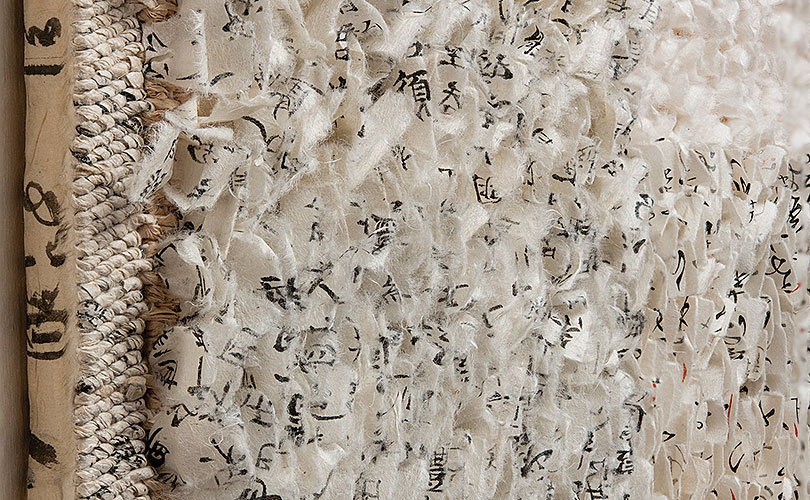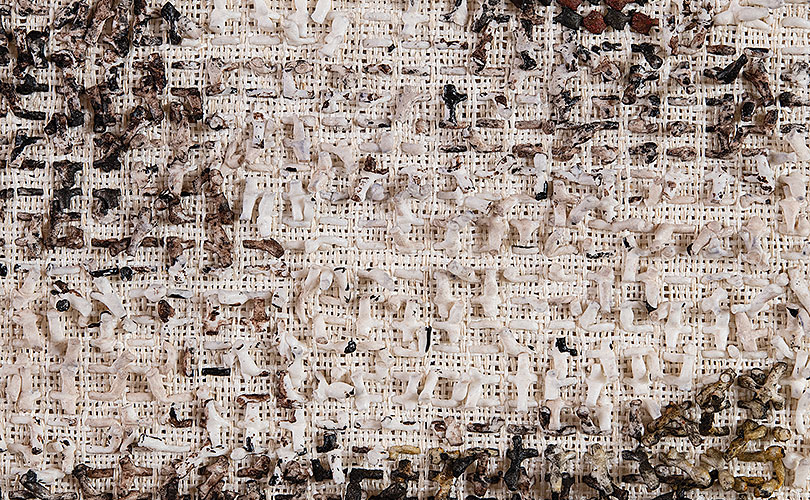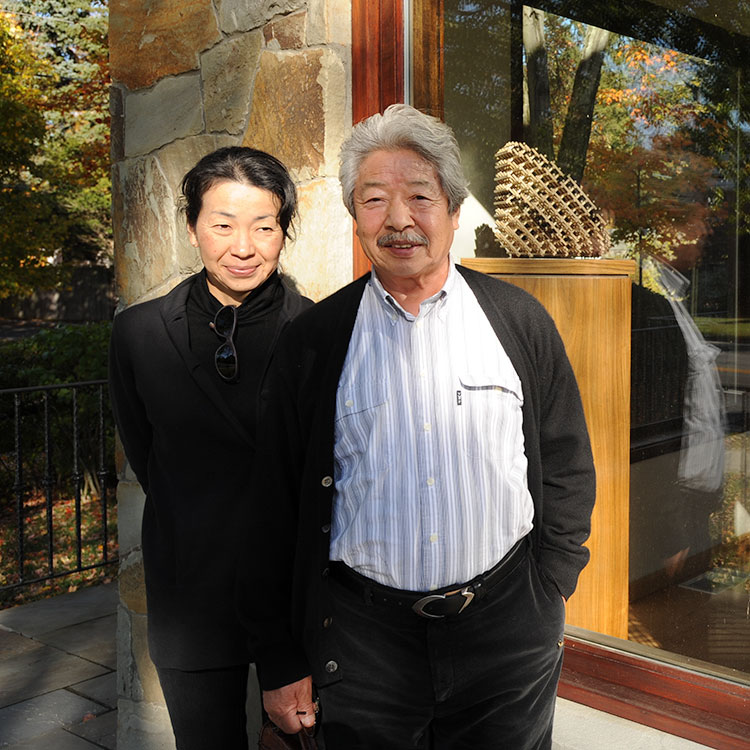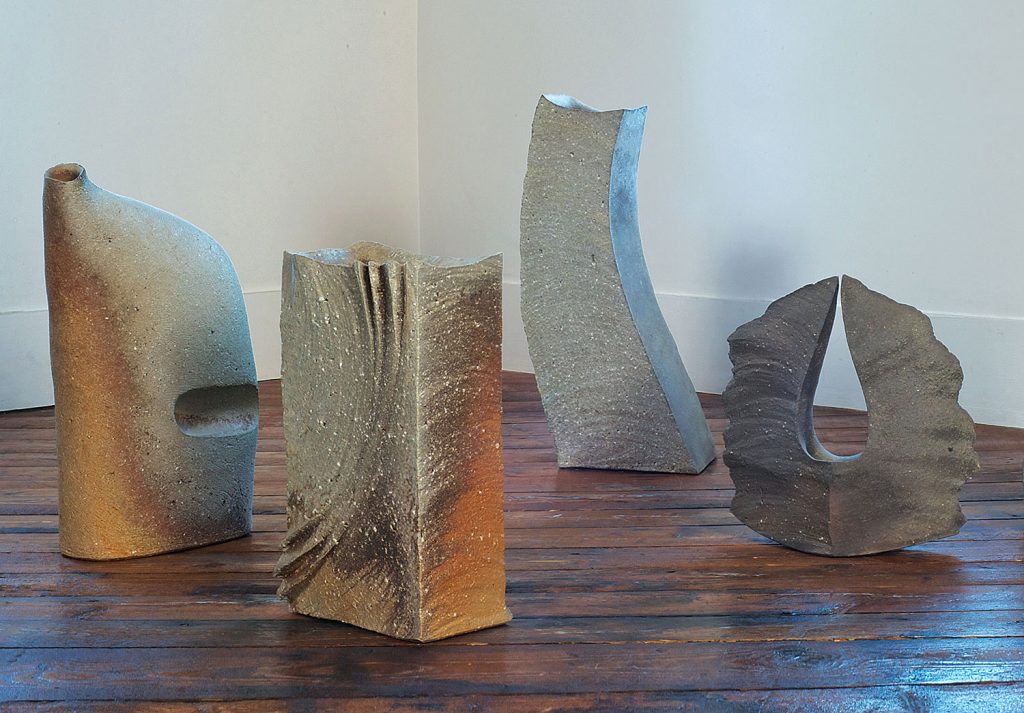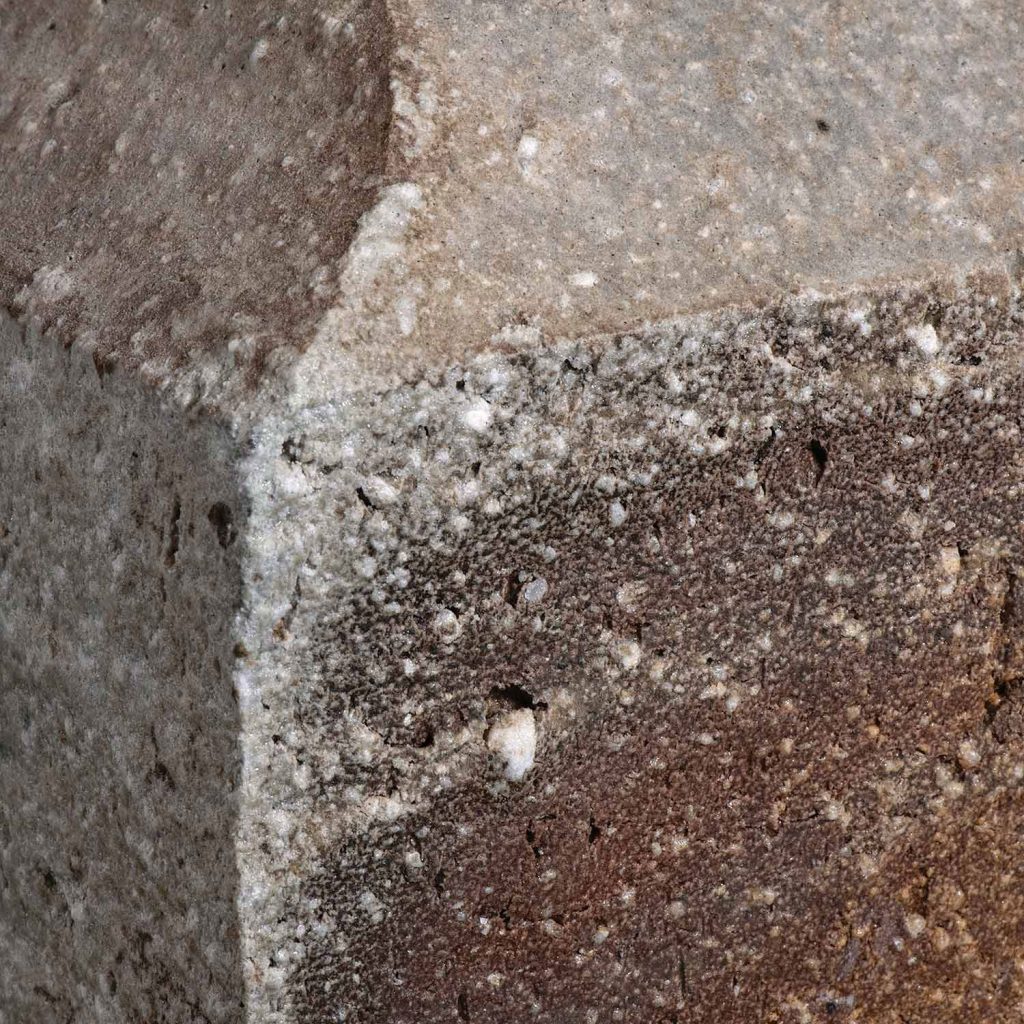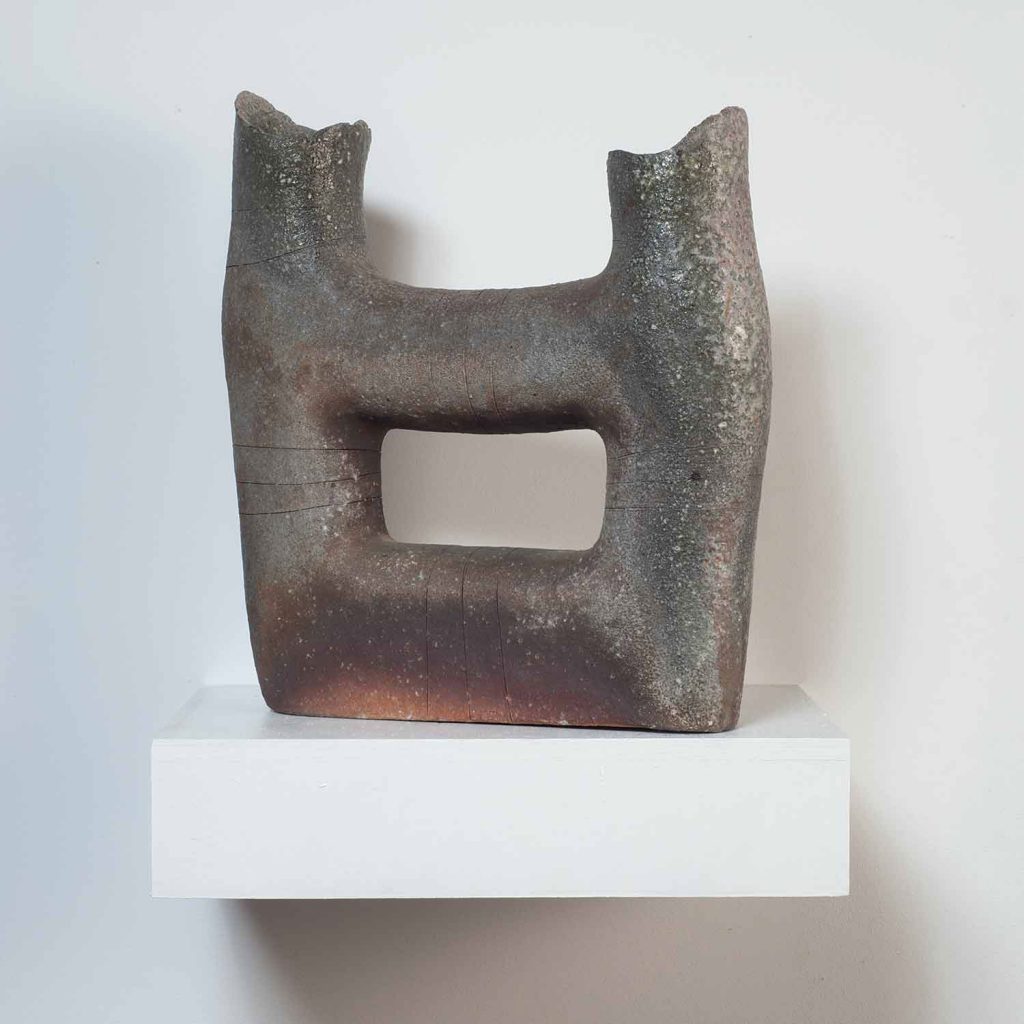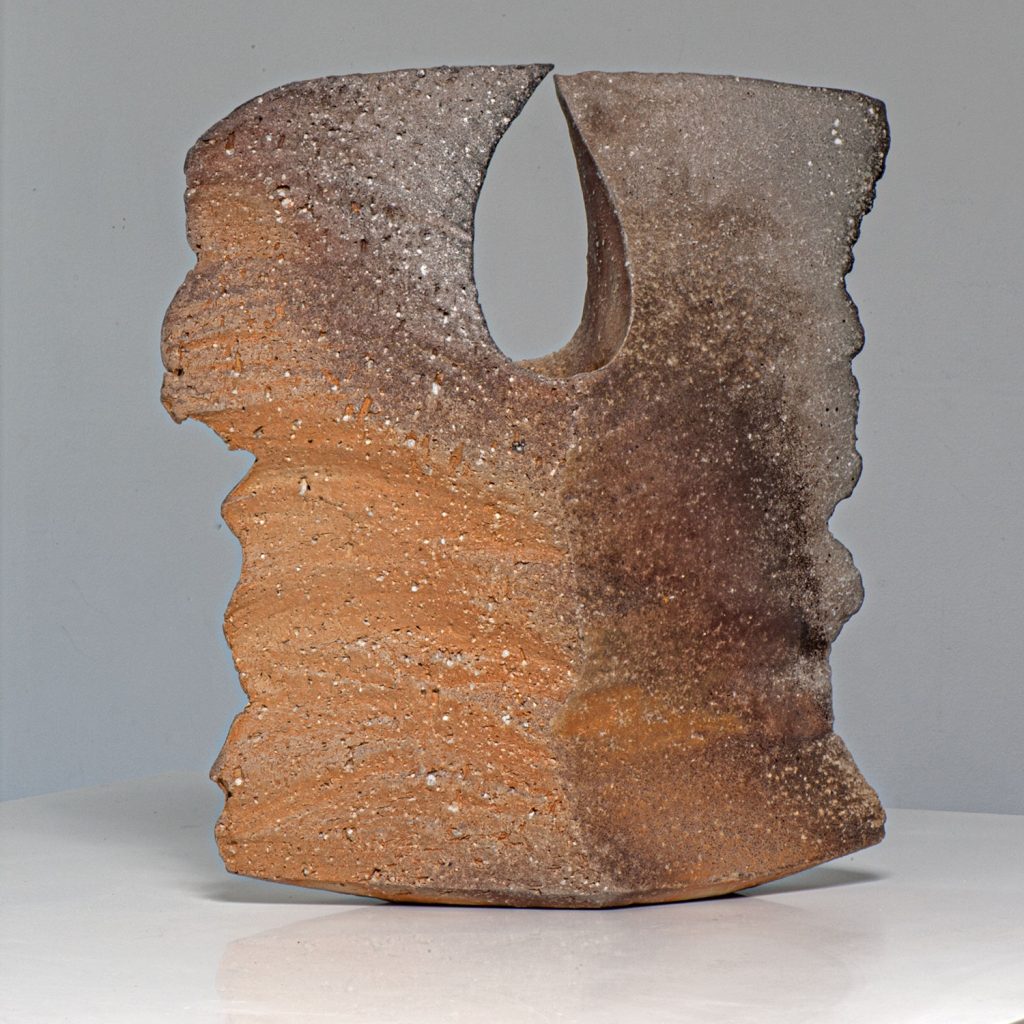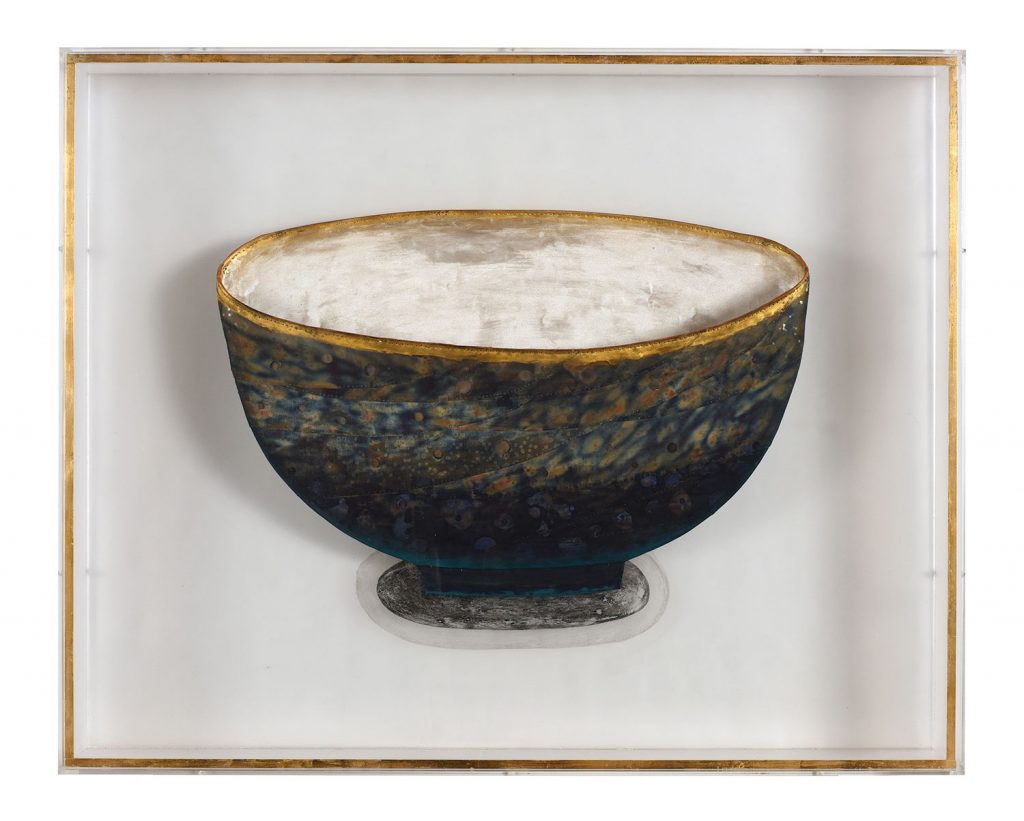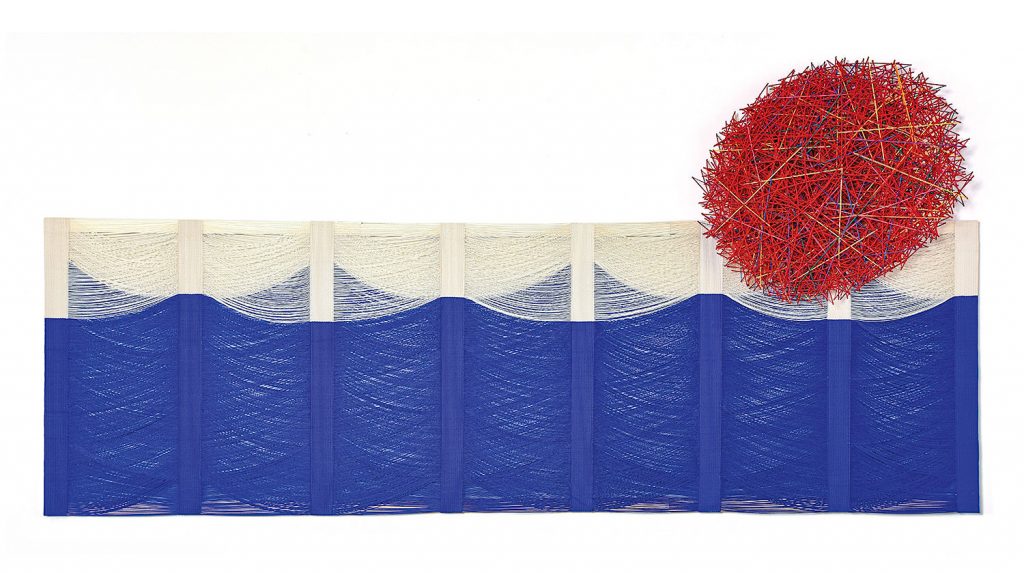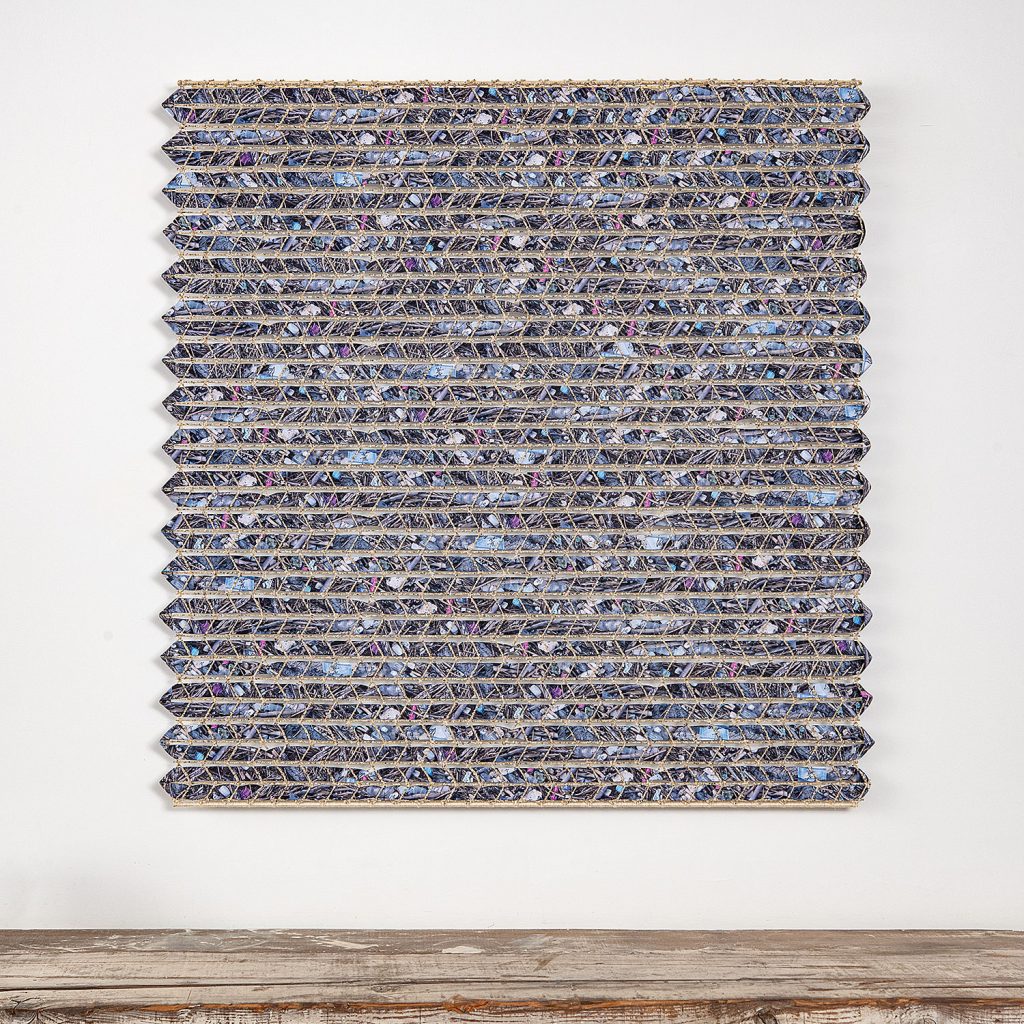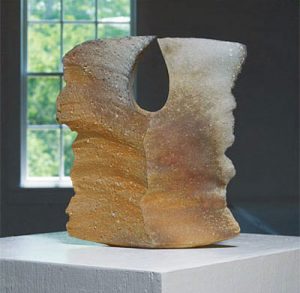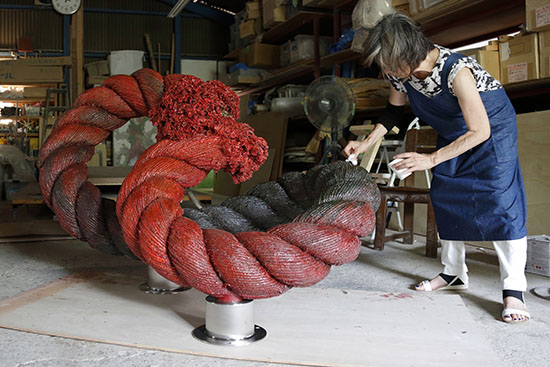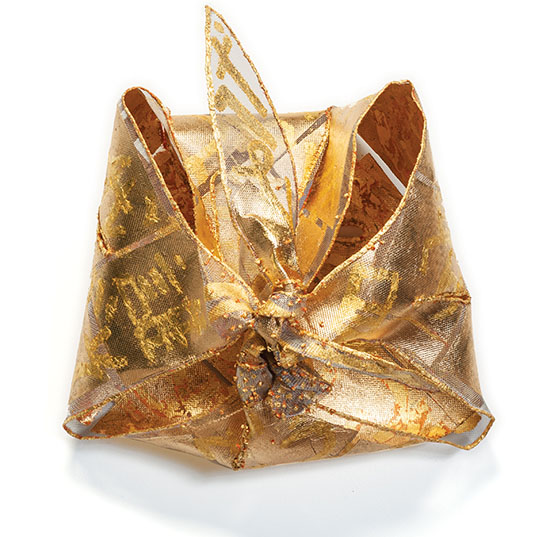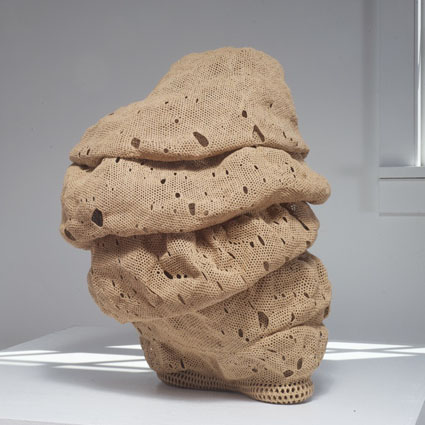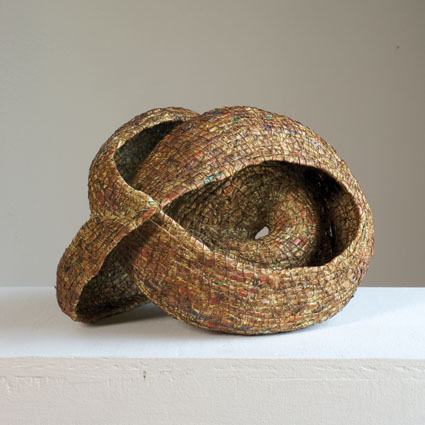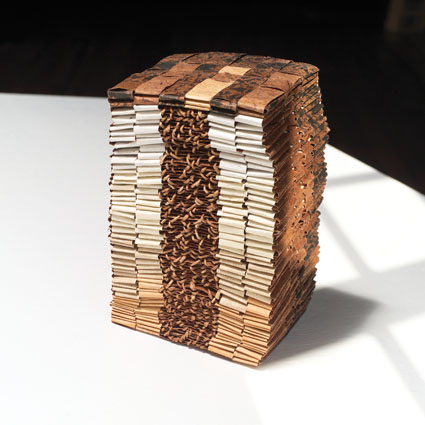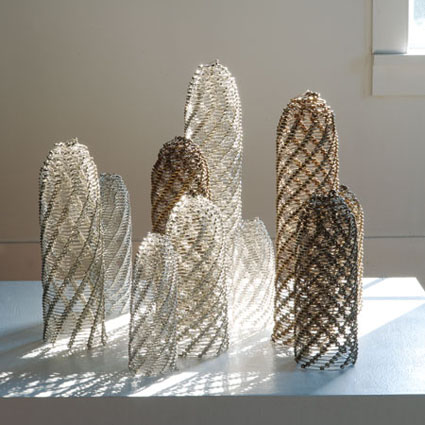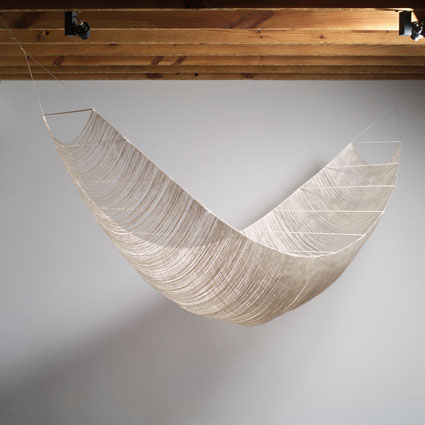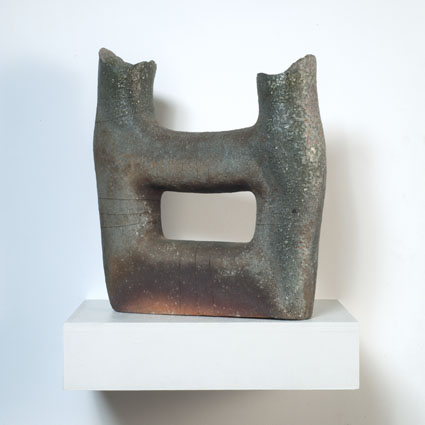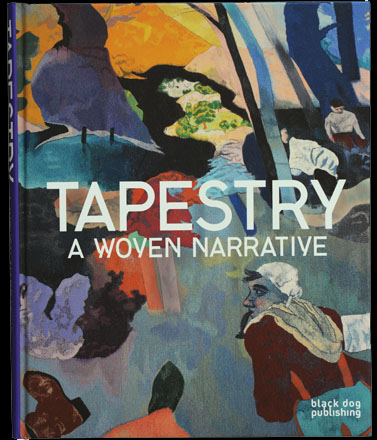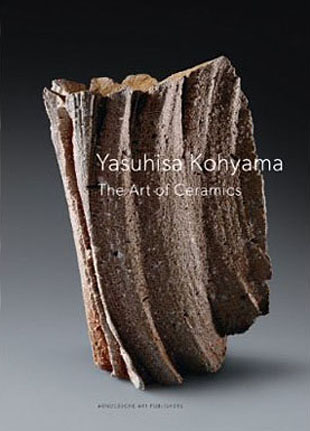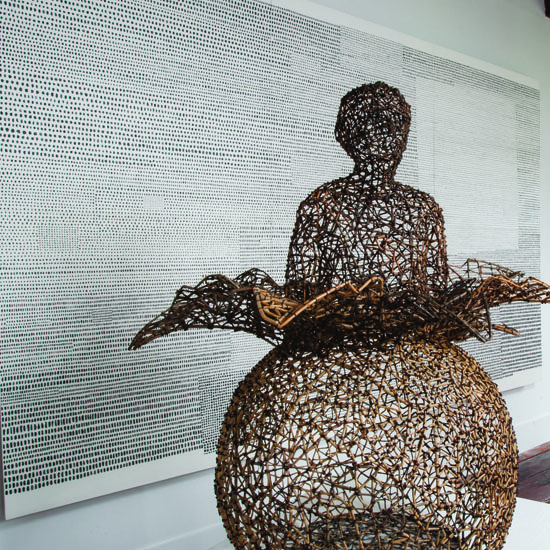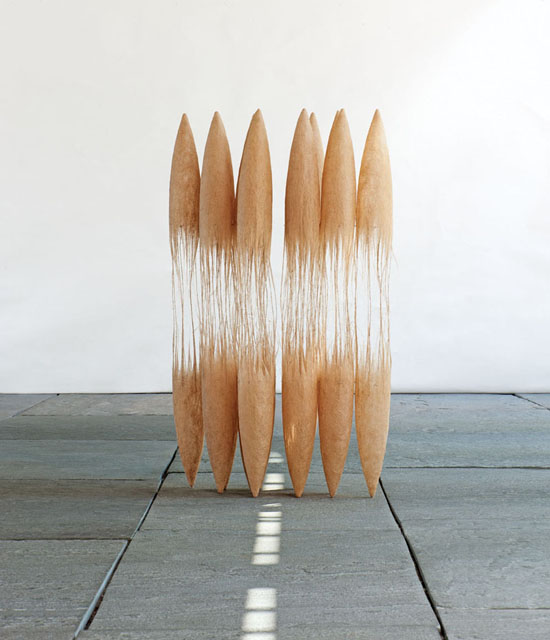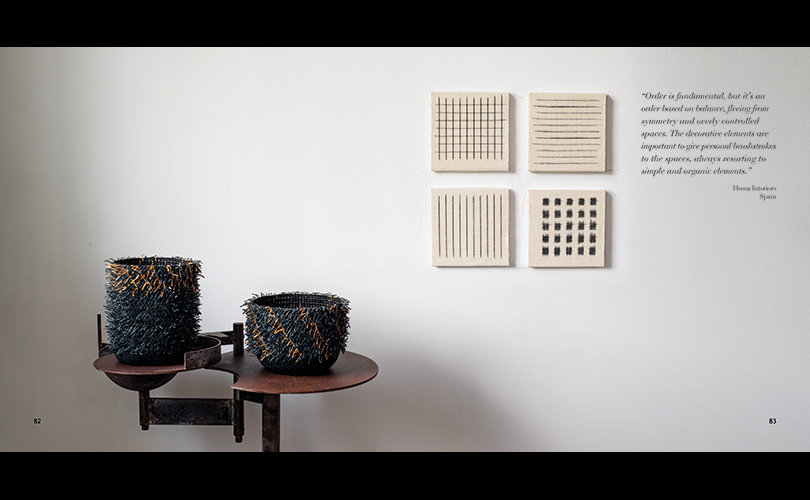
For browngrotta arts, documentation of the field of contemporary art textiles is critically important. Like a tree falling in the forest, if we don’t document an exhibition we’ve curated it’s a bit like if it didn’t happen. Generally, our exhibitions include catalogs that feature individual images of each artwork included, and often, an artist’s statement for each work. In addition, we typically feature essays by curators and scholars who take a broader look at the work or the exhibition theme.

For our latest catalog, Japandí: shared aesthetics and influences https://store.browngrotta.com/catalogs/ (our 52nd), however, we took a slightly different approach. Japandi is a term that refers to the aesthetic kinship one sees between art and design of Japan and the Scandinavian countries. To illustrate affinities, we created spreads — room- or wall-sized groupings of works from each region, rather than highlighting individual artworks. We included the artists’ recollections about how they discovered another culture or how other cultures have influenced their work. We added statements from designers, architects and authors about the similarities they have observed.
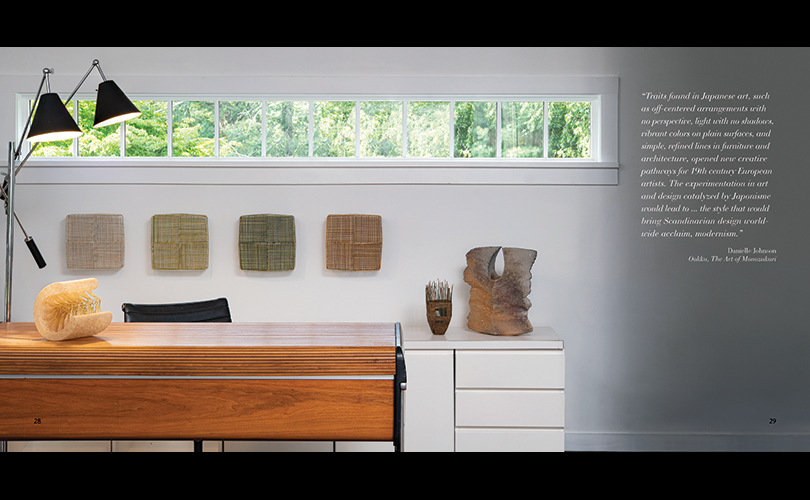
Instead of commissioning an essay, we shared with you what we discovered about Japandi as we researched this exhibition. The introductory text, Mapping Affinities, explains that the roots of Japanese/Nordic synergy extend to the 19th century. It also explains that the trendy term, Japandi, refers to four elements, which the introduction describes: appreciation for exquisite craftsmanship and natural and sustainable materials, minimalism and respect for the imperfect (wabi-sabi) and the comfortable (hygge). The introduction also describes how the artists included experience the Japandi elements differently — some through study, some through travel. Still others describe recognizing these parallels in ways as something they were always aware of and acted upon.
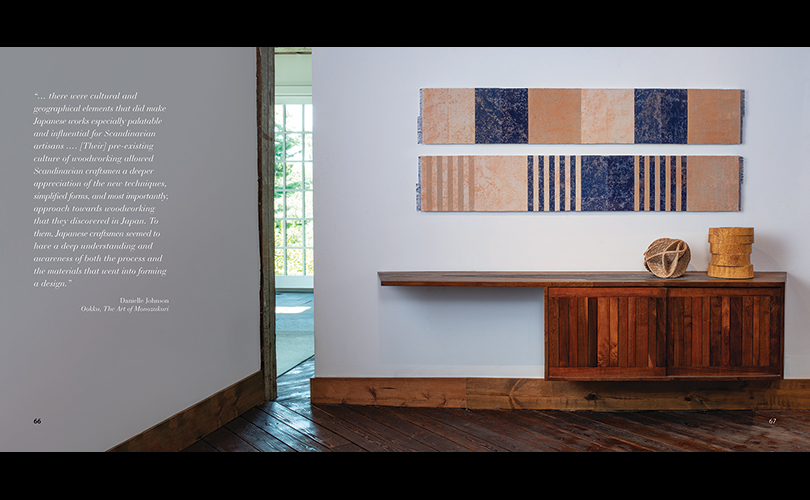
Not all the work that is in the catalog appeared in the exhibition — we included these works to further illustrate our sense of the regions’ common approaches.

We hope you’ll get a copy of Japandí: shared aesthetics and influences https://store.browngrotta.com/catalogs/ and see for yourself.


